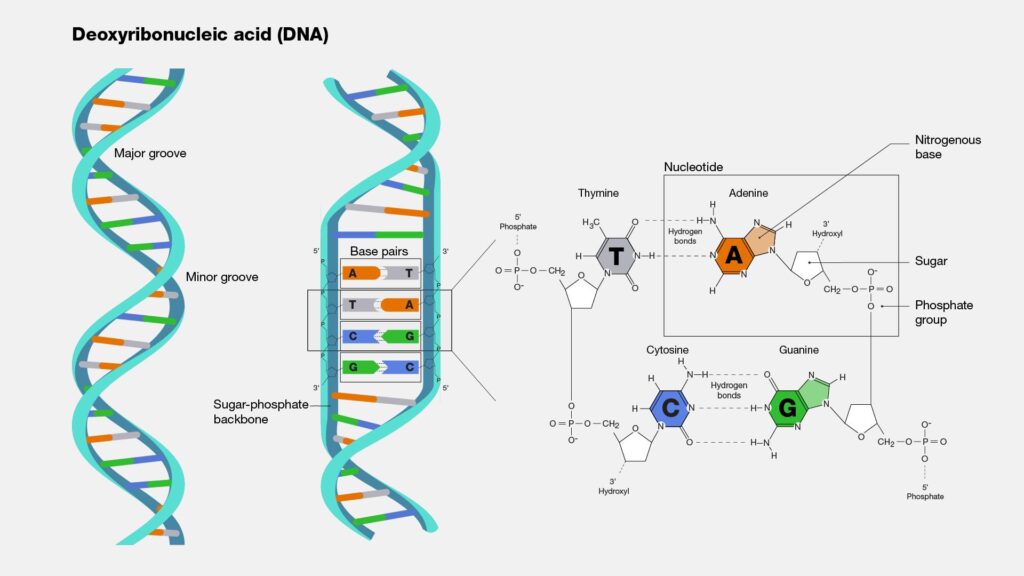Recent advances in DNA science are opening new avenues for identifying missing persons and providing long-awaited answers to families affected by disappearances. As forensic technology becomes increasingly sophisticated, law enforcement agencies and genetic researchers are harnessing cutting-edge genetic analysis to solve cold cases that once seemed intractable. This emerging intersection of science and investigation offers renewed hope that more families will finally learn the fate of their loved ones, shedding light on cases that have remained unresolved for years or even decades. The New York Times reports on how these breakthroughs are reshaping the search for the missing and transforming the landscape of forensic identification.
Advancements in DNA Technology Transforming Efforts to Identify Missing Persons
Recent breakthroughs in DNA sequencing and analysis are revolutionizing the way investigators tackle the heart-wrenching challenge of identifying missing persons. Cutting-edge techniques, such as rapid DNA profiling and genetic genealogy, have significantly reduced the time and uncertainty traditionally involved in these cases. These innovations enable forensic scientists to extract usable DNA from highly degraded samples, making it possible to generate viable leads where conventional methods once failed.
Among the pivotal tools transforming this field are:
- Automated DNA sequencers that accelerate processing times from weeks to days
- Large-scale DNA databases facilitating cross-referencing with relatives or unidentified remains
- Machine learning algorithms that help predict familial relationships by analyzing complex genetic markers
| Technology | Impact | Average Timeframe |
|---|---|---|
| Rapid DNA Profiling | Fast generation of DNA profiles | Within 24 hours |
| Genetic Genealogy | Linking DNA to distant relatives | 2-4 weeks |
| AI-Powered Analysis | Enhanced pattern recognition | Hours to days |
Collaboration Between Scientists and Law Enforcement Expands Hope for Families
Recent advancements in DNA technology have ushered in a new era of cooperation between geneticists and law enforcement agencies. By combining cutting-edge genomic analysis with traditional investigative methods, scientists and police are breaking through cases that once seemed unsolvable. This partnership not only accelerates the identification process but also provides families with renewed hope after years of uncertainty. Technologies like genetic genealogy and advanced sequencing enable the comparison of degraded or partial samples against expansive public databases, yielding leads that would have been impossible just a decade ago.
Key elements driving this collaboration include:
- Integration of forensic science with open-source genealogy platforms
- Cross-disciplinary task forces sharing expertise and data in real time
- Ongoing development of sophisticated algorithms that improve match accuracy
| Technology | Impact on Investigations | Result for Families |
|---|---|---|
| Genetic Genealogy | Identifies unknown remains through distant relatives | Closure with confirmed identities |
| Next-Gen Sequencing | Analyzes highly degraded DNA samples | Expanded scope for previously untestable evidence |
| AI Matching Algorithms | Enhances precision of DNA matches across databases | Faster case resolutions |
Experts Advocate for Increased Funding and Nationwide DNA Databases
Leading forensic scientists and legal advocates are pushing for a substantial increase in funding to expand the capabilities of law enforcement agencies across the country. They emphasize that enhanced financial support would accelerate the integration of cutting-edge DNA technologies into missing persons investigations, ultimately helping to identify unknown remains and reconnect families. Experts point out that current limitations in resources have left countless cases stagnant, with many families enduring prolonged uncertainty. By enabling more comprehensive DNA analysis and providing training for forensic personnel, these investments could revolutionize the search for missing individuals.
In addition to funding, there is growing consensus around the creation of a nationwide DNA database. Such a resource would facilitate seamless data sharing between jurisdictions, breaking down barriers that often hinder timely identification. Advocates highlight the following benefits:
- Standardized protocols: Ensuring consistent procedures for DNA collection and storage nationwide.
- Faster cross-referencing: Enabling rapid matches between unidentified remains and missing persons reports.
- Broader coverage: Including data from local, state, and federal agencies to unify efforts.
| Current Challenge | Proposed Solution | Expected Outcome |
|---|---|---|
| Fragmented data systems | Nationwide DNA database | Improved match rates |
| Limited forensic workforce | Increased training & funding | Faster case resolution |
| Underfunded labs | Federal grants and resources | Advanced analysis techniques |
Closing Remarks
As advances in DNA technology continue to evolve, they offer renewed hope for countless families still searching for their missing loved ones. By enabling more accurate identification and quicker matches, these scientific breakthroughs are transforming the landscape of forensic investigations. While challenges remain, the integration of cutting-edge DNA methods signals a promising step forward in the ongoing effort to bring closure to families long left in uncertainty. The New York Times will continue to monitor developments in this critical intersection of science and justice.
